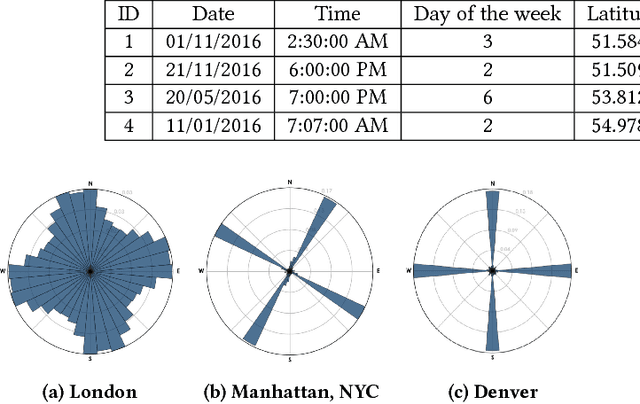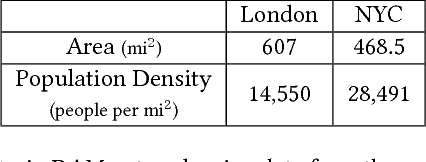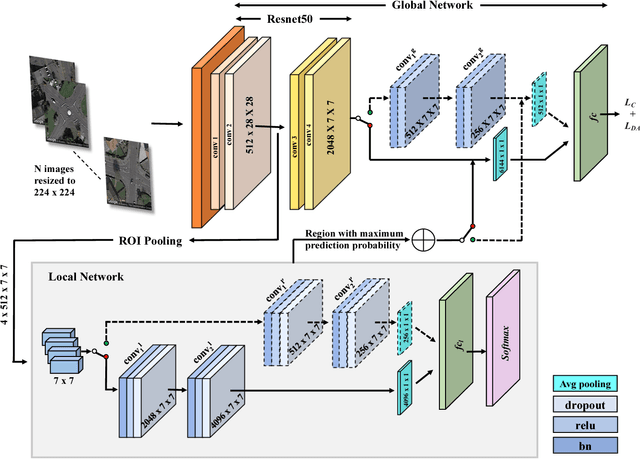A. V. Subramanyam
Nearest Neighbor Projection Removal Adversarial Training
Sep 10, 2025Abstract:Deep neural networks have exhibited impressive performance in image classification tasks but remain vulnerable to adversarial examples. Standard adversarial training enhances robustness but typically fails to explicitly address inter-class feature overlap, a significant contributor to adversarial susceptibility. In this work, we introduce a novel adversarial training framework that actively mitigates inter-class proximity by projecting out inter-class dependencies from adversarial and clean samples in the feature space. Specifically, our approach first identifies the nearest inter-class neighbors for each adversarial sample and subsequently removes projections onto these neighbors to enforce stronger feature separability. Theoretically, we demonstrate that our proposed logits correction reduces the Lipschitz constant of neural networks, thereby lowering the Rademacher complexity, which directly contributes to improved generalization and robustness. Extensive experiments across standard benchmarks including CIFAR-10, CIFAR-100, and SVHN show that our method demonstrates strong performance that is competitive with leading adversarial training techniques, highlighting significant achievements in both robust and clean accuracy. Our findings reveal the importance of addressing inter-class feature proximity explicitly to bolster adversarial robustness in DNNs.
Conditional Consistency Guided Image Translation and Enhancement
Jan 03, 2025Abstract:Consistency models have emerged as a promising alternative to diffusion models, offering high-quality generative capabilities through single-step sample generation. However, their application to multi-domain image translation tasks, such as cross-modal translation and low-light image enhancement remains largely unexplored. In this paper, we introduce Conditional Consistency Models (CCMs) for multi-domain image translation by incorporating additional conditional inputs. We implement these modifications by introducing task-specific conditional inputs that guide the denoising process, ensuring that the generated outputs retain structural and contextual information from the corresponding input domain. We evaluate CCMs on 10 different datasets demonstrating their effectiveness in producing high-quality translated images across multiple domains. Code is available at https://github.com/amilbhagat/Conditional-Consistency-Models.
Beckman Defense
Jan 05, 2023Abstract:Optimal transport (OT) based distributional robust optimisation (DRO) has received some traction in the recent past. However, it is at a nascent stage but has a sound potential in robustifying the deep learning models. Interestingly, OT barycenters demonstrate a good robustness against adversarial attacks. Owing to the computationally expensive nature of OT barycenters, they have not been investigated under DRO framework. In this work, we propose a new barycenter, namely Beckman barycenter, which can be computed efficiently and used for training the network to defend against adversarial attacks in conjunction with adversarial training. We propose a novel formulation of Beckman barycenter and analytically obtain the barycenter using the marginals of the input image. We show that the Beckman barycenter can be used to train adversarially trained networks to improve the robustness. Our training is extremely efficient as it requires only a single epoch of training. Elaborate experiments on CIFAR-10, CIFAR-100 and Tiny ImageNet demonstrate that training an adversarially robust network with Beckman barycenter can significantly increase the performance. Under auto attack, we get a a maximum boost of 10\% in CIFAR-10, 8.34\% in CIFAR-100 and 11.51\% in Tiny ImageNet. Our code is available at https://github.com/Visual-Conception-Group/test-barycentric-defense.
Circularly Polarized Fabry-Perot Cavity Sensing Antenna Design using Generative Model
Sep 29, 2022



Abstract:We consider the problem of designing a circularly polarized Fabry-P'erot cavity (FPC) antenna for S-band sensing applications. The spatial distribution of peripheral roughness of the unit cell of FPC's partially reflecting surface serves as an important design optimization criterion. However, the evaluation of each candidate design using a full-wave solver is computationally expensive. To this end, we propose a deep generative adversarial network (GAN) for realizing a surrogate model that is trained with input-output pairs of antenna designs and their corresponding patterns. Using the GAN framework, we quickly evaluate the characteristics of a large volume of candidate designs and choose the antenna design with an axial ratio of 0.4 dB, gain of 7.5 dB and, bandwidth of 269 MHz.
Attentional Road Safety Networks
Dec 12, 2018



Abstract:Road safety mapping using satellite images is a cost-effective but a challenging problem for smart city planning. The scarcity of labeled data, misalignment and ambiguity makes it hard for supervised deep networks to learn efficient embeddings in order to classify between safe and dangerous road segments. In this paper, we address the challenges using a region guided attention network. In our model, we extract global features from a base network and augment it with local features obtained using the region guided attention network. In addition, we perform domain adaptation for unlabeled target data. In order to bridge the gap between safe samples and dangerous samples from source and target respectively, we propose a loss function based on within and between class covariance matrices. We conduct experiments on a public dataset of London to show that the algorithm achieves significant results with the classification accuracy of 86.21%. We obtain an increase of 4% accuracy for NYC using domain adaptation network. Besides, we perform a user study and demonstrate that our proposed algorithm achieves 23.12% better accuracy compared to subjective analysis.
 Add to Chrome
Add to Chrome Add to Firefox
Add to Firefox Add to Edge
Add to Edge